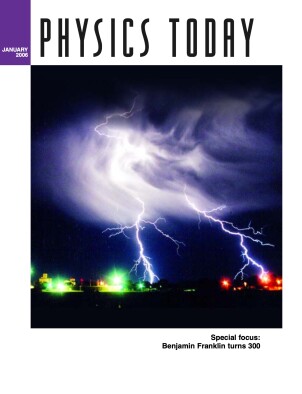Physicists protest US nuclear policy
DOI: 10.1063/1.2180172
Do not undermine the Nuclear Non-Proliferation Treaty (NPT). That’s the message two physics professors at the University of California, San Diego, are trying to spread with a web-based petition they launched last fall.
Kim Griest, an astrophysicist, and Jorge Hirsch, a condensed matter physicist, started the petition after reading newspaper accounts of changes in US nuclear policy. The policy is recapped in the “Doctrine for Joint Nuclear Operations,” a document from the Joint Chiefs of Staff, a body composed of the highest-ranking member from each branch of the military. The policy, says Griest, blurs the distinctions between nuclear weapons and other weapons and endorses preemptive nuclear strikes on non-nuclear states.
Among the reasons listed in the doctrine for which “combatant commanders may request presidential approval for use of nuclear weapons” are “to counter potentially overwhelming adversary conventional forces,” “for rapid and favorable war termination on US terms,” and “to demonstrate US intent and capability to use nuclear weapons to deter adversary use of WMD [weapons of mass destruction].” (The petition, with links to the doctrine and other documents, is at http://physics.ucsd.edu/petition
“This policy is much more dangerous than people think,” says Griest. “It will destroy the NPT. If the US can attack a non-nuclear state, then the only defense is to make your own nuclear weapons. Every country will want to build their own.”
Under the NPT, the official nuclear weapons states—the US, Russia, the UK, France, and China—have made “negative security assurances”: They have promised not to strike non-nuclear states. “Those promises are part of what is being called into question now,” says Hans Kristensen, director of the nuclear information project at the Federation of American Scientists. Under the new policy, he says, a member of the NPT that has no nuclear weapons “but may have developed biological or chemical weapons can be attacked, or threatened with attack, by US nuclear weapons.”
Steven Weinberg, one of the nine Nobel laureates among the more than 1600 physicists who had signed the petition as of press time, says, “I think it’s a terrible thing for our country to weaken the taboo against the use of nuclear weapons.” Pointing to Congress’s decision in October 2005 not to fund the Robust Nuclear Earth Penetrator, which was intended to be used preemptively on buried chemical or biological weapons, Weinberg adds, “I think the bunker-buster case is an example where public opinion did have an effect.”
“We are physicists,” says Hirsch. “We made these weapons. We work on these weapons. We benefit from the defense establishment—they give us money. Physicists need to take a stand as a community.” Adds Griest, “Our goal is to generate enough discussion so that the policy is revised.”
More about the Authors
Toni Feder. American Center for Physics, One Physics Ellipse, College Park, Maryland 20740-3842, US . tfeder@aip.org
